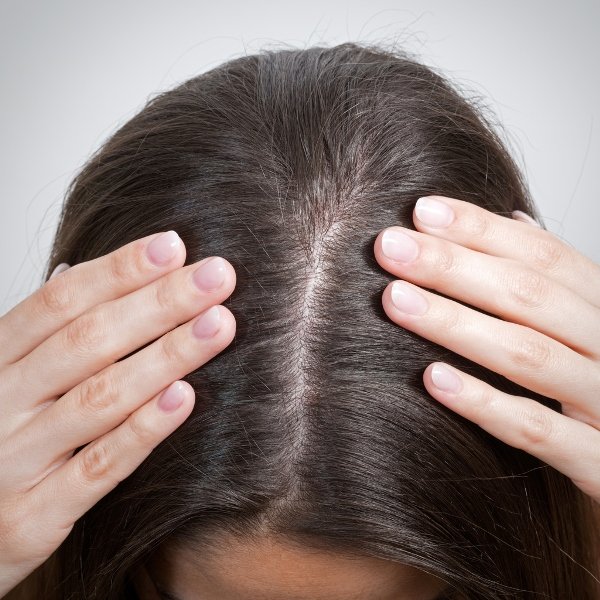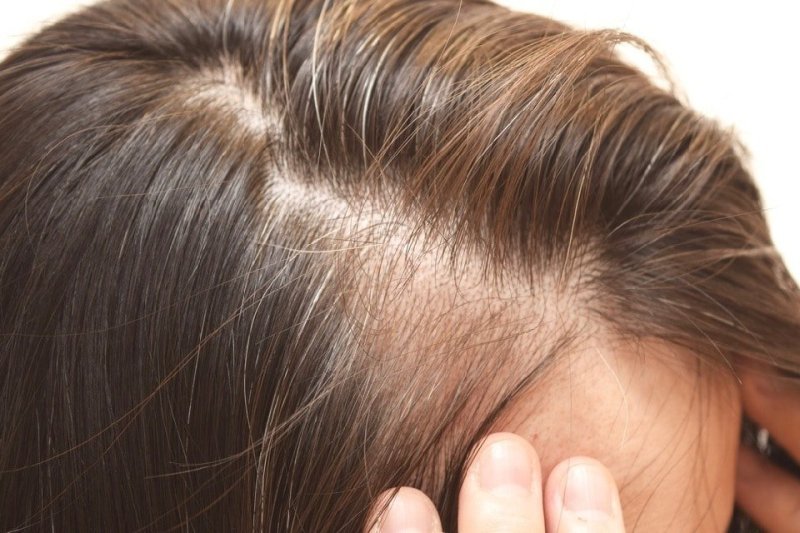
Hair can be thin or thick, and thick and thin hair differ from each other in many ways. Depending on the hair type you have, you can go for some haircuts or hairstyles that match your hair. For instance, if you have thin hair, there are hairstyles that can make your hair look fuller. This thick hair vs thin hair comparison will show you things you don’t know about these two hair types, straight from Samantha Brown.
Differences Between Thin and Thick Hair
There are big differences between thin and thick hair. These differences can affect your hairstyling methods and hair care treatments.

#1 – Hair Density
Hair density pertains to the number of hairs on your head. Density is the major difference between thin and thick hair. Thick hair comes with a higher density while it’s the opposite for thin hair.
You can determine the density of your hair based on the number of hair strands on a square inch of your head. Usually, a person has around 2,200 hairs for each square inch. You have a thicker hair if you have more than 2,200 hair strands. You have thinner hair if you have fewer hair strands.
Each hair strand grows from the pocket-like holes called follicles. Therefore, if your hair is thick, this means you have more hair follicles.
#2 – Cuts
Another major difference between thin and thick hair is how cut affects the hair. Thick hair looks good with a layered cut while the blunter cut is better for thin hair whereas the hair strands have the same length.
Thin hair looks better with curling and other hairstyles that can add volume. Straighter hairstyles are great for thick hair because the excessive volume is often an issue for someone with thick hair.
#3 – Visibility
To know the visibility of your own hair, start with rinsing it and allowing it to dry with air. Don’t towel dry and style your hair when you wash it. Styled or dirty hair can twist the results when trying to know your hair’s visibility.
When your hair dries, hold one hair strand between your fingers. Pull it going to your face and observe your hair shaft. If this hair strand is hardly noticeable, then your hair is fine. When rolling the hair shaft between your fingers, you barely feel this if you have thin hair. Thick hair is easier to feel when you roll a hair strand between your fingers. It can feel wiry or coarse and is clearly visible.
#4 – Measurements
Likewise, there’s a way to determine the thickness or thinness of your hair. This is a simple technique that can provide accurate results. When your hair is long enough, just pull it back on the ponytail then measure the circumference of your ponytail. Thin hair usually measures less than 2 inches in perimeter, but thick hair typically measures 4 inches or more. Use a tape measure (the one used in sewing clothes). Choose a soft and flexible tape measure. Measurements that are in-between are “normal”, which means your hair is not notably thin or thick.

#5 – Hair Follicles
The Tech Museum at the Stanford School of Medicine said the shape and size of your hair follicles can significantly affect the thickness or thinness of your hair. Hair follicles are from where new hair strands will appear.
Hair follicles can affect your hair’s thickness or thinness in two ways. The size of a single hair follicle determines how thick or thin every hair shaft should grow. The Tech Museum also said big hair follicles produce thick hair while tiny hair follicles produce thin hair.
Next, the number of hair follicles which line your scalp affect the thickness of your hair. People with more hair follicles will normally have thicker and fuller hair while the case is opposite for those with thinner hair.
#6 – Ethnicity and Color
Although it is not a steadfast rule, ethnicity and color are two significant differences between thin and thick hair. Thick hair is more common for people with blonde or brunette hair. Thin hair is more common for people with red hair.
When it comes to ethnicity, Caucasians often have thicker hair while Far East Asians generally have thin hair. Though ethnicity and color are interesting ways to categorize hair types, measurement is the solitary way to determine if you have thin or thick hair.
Choose What’s Right for Your Hair Type
You should know what kind of hair you have by now. Whether it is thin or thick hair, make sure you choose what is right for it. Choose the hairstyles or haircuts that can enhance your hair. Feel free to ask your friendly hairstylist about the hottest hairstyles suitable for thin or thick hair. Likewise, choose the hair care products that will nourish and keep your hair healthy.
There’s nothing to worry if you have thin or thick hair. No matter what the case, there are always simple ways to help you manage your hair and keep it beautiful.




